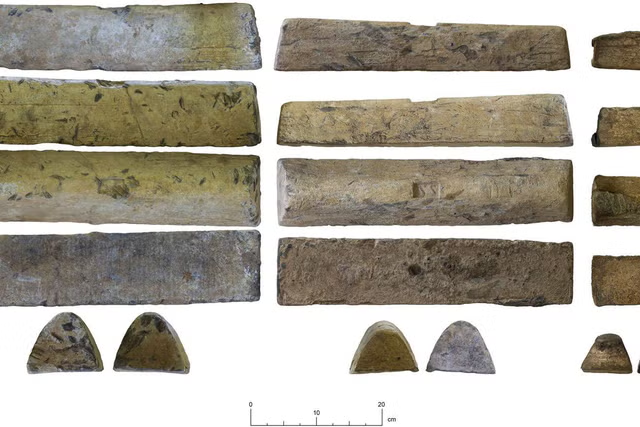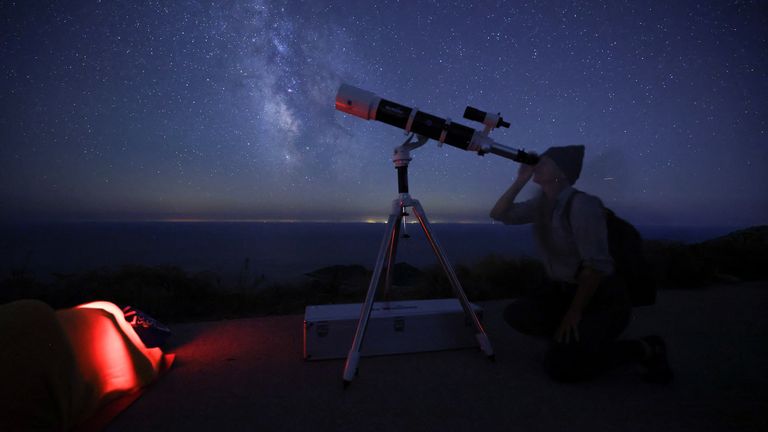Powerful geomagnetic storms sparked auroras in the skies across the northern U.S. Sunday night, and more might be on their way Monday evening.
A coronal mass ejection (CME) flung out from the sun's surface triggered a G3 geomagnetic storm on Sunday night, and two more may be about to hit the Earth, causing G1 or G2 storms. This could result in auroras being seen as far south as New York, Idaho and even in the Midwest.
CMEs are enormous clouds of solar plasma and solar magnetic field that are spat out of our star during periods of intense activity. CMEs are usually produced at sunspot regions and often accompany a solar flare. During periods of more intense solar activity, such as when the sun is nearing its solar maximum—as it is currently—CMEs and solar flares are more common and more powerful.
When a CME is directed toward Earth, it can interact with the planet's magnetosphere—the magnetic field that surrounds it. This interaction can cause disturbances in Earth's magnetic field in the form of geomagnetic storms, which can lead to various events, such as auroras (northern and southern lights) and disruptions to satellite communications, GPS signals and power grids.
Geomagnetic storms are measured on a scale of G1 to G5, with the more powerful storms being more rare. The G5 geomagnetic storm that occurred on May 10, which showered all 50 states with the northern lights, was the first of its category since 2003.
More powerful geomagnetic storms cause the northern lights to be seen farther south than usual, with Sunday's G3 storm lighting up the sky as far south as Nevada and Northern California.
In its forecast discussion, the National Oceanic and Atmospheric Administration's (NOAA) Space Weather Prediction Center said: "Periods of G1-G2 (Minor-Moderate) geomagnetic storms are likely on 12 Aug due to the anticipated influences from the CMEs from 08 and 10 Aug. Confidence in the expected magnitude of these CMEs is low. Quiet to active levels are expected on 13-14 Aug as CME effects diminish."
G2 storms can result in auroras being visible as far south as Idaho and New York, while G1 storms usually limit auroras to northern Michigan and Maine.
The NOAA can't always be sure how powerful a CME will be, and therefore how strong the subsequent geomagnetic storm will be, because of difficulties in measuring the properties of CMEs before they arrive.
"Observations of the sun can be incomplete or hard to interpret, and there are aspects of our observations which are missing," Huw Morgan, head of the Solar Physics group at the U.K.'s Aberystwyth University, told Newsweek.
"One important example is the magnetic field of the CME," he said. "Which way this field points is very important in determining its effect on Earth, and we lack detailed information on this until the CME has almost reached Earth. This is just one example of why it is very challenging to provide accurate forecasts."
The sun's intense activity at the moment has also led to immense numbers of sunspots being spotted on its surface. The sun may have hit its highest sunspot number since July 2002, according to the NOAA.
"The estimated sunspot number for August 8 likely reached the highest value thus far in Solar Cycle 25 and may be the highest since at least July 2002," the NOAA wrote in an advisory. It said the figure could be at least 299, and the official number should be available by September 1.
Do you have a tip on a science story that Newsweek should be covering? Do you have a question about the northern lights? Let us know via science@newsweek.com.
Disclaimer: The copyright of this article belongs to the original author. Reposting this article is solely for the purpose of information dissemination and does not constitute any investment advice. If there is any infringement, please contact us immediately. We will make corrections or deletions as necessary. Thank you.



